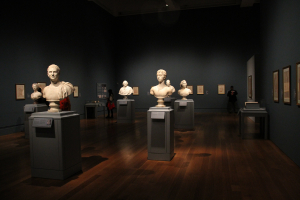Top 15 Classification Essay Topics for Middle School Students
Middle school is a crucial period for students, fostering curiosity and critical thinking. The classification essay, an engaging and educational writing ... read more...assignment, prompts students to categorize and analyze diverse subjects. Here, Toplist will explore classification essay topics for middle school students, igniting creativity and intellectual curiosity.
-
Essay topic: Classify animals based on their habitats, such as forest-dwelling, aquatic, or desert animals
Answer:
Animals inhabit various ecosystems, each uniquely suited to their specific habitat requirements. Across the diverse landscapes of the world, animals have adapted to thrive in forests, aquatic environments, and deserts.
Forests have many different animals. These creatures adapted to live in the forest's dense trees and thriving ecosystems. Forest-dwelling animals come in various forms, like tree-dwellers and ground-dwelling species. Some examples are lemurs, Bengal tigers, jaguars, and sloths. These animals blend into the forest, using their senses and movements to survive. They add to the forest's biodiversity and show how nature can adapt and survive in different places.The water is home to lots of animals. They have adaptations to live and move in water. Some are marine mammals, and some live in freshwater. Examples include dolphins, octopuses, coral reef fish, and blue whales. In freshwater, there are animals like trout, crayfish, and river otters. They have bodies and systems that help them live and move in water, showing the great diversity and ability of aquatic animals
Deserts have their own set of animals. These creatures have unique ways of living in hot, dry areas with little water and plants. Some iconic desert animals are camels, fennec foxes, meerkats, and desert eagle owls. They have special abilities to save water, endure heat, and act in certain ways that help them live in the desert's extreme conditions.
In summary, the classification of animals based on their habitats sheds light on the extraordinary diversity of the animal kingdom across various ecosystems. From the forest canopy to the depths of the ocean, and the stark desolation of the desert, animals have evolved an unparalleled range of adaptations to thrive in their respective habitats.
Cite this page (APA 7th edition): Toplist Joint Stock Company. (n.d.). Animal classification. toplist.info. https://toplist.info/top/animal-classification-153148.htm

Image via Unsplash 
Image via Unsplash -
Essay topic: Explore the benefits of sarcasm
Answer:
Sarcasm, often seen as a form of verbal irony, is a rhetorical device that involves saying one thing but meaning the opposite. While it is commonly associated with negative connotations, a closer examination reveals that sarcasm can offer several benefits. In this essay, we explore the positive dimensions of sarcasm, shedding light on its potential advantages in communication and social interactions.
One of the primary benefits of sarcasm lies in its capacity to inject humor and entertainment into conversations. Sarcasm often employs wit and cleverness, eliciting laughter and lightening the mood. In social interactions, a well-timed sarcastic remark can serve as an effective icebreaker, fostering camaraderie and creating a shared sense of amusement among participants.
Engaging with sarcasm requires cognitive flexibility, as individuals need to discern the disparity between the literal and intended meanings. This mental exercise can enhance cognitive abilities and promote critical thinking. Over time, individuals adept at processing sarcasm may develop sharper analytical skills and an increased ability to navigate complex linguistic nuances.
Sarcasm, when used in a playful and non-malicious manner, can strengthen social bonds. Shared sarcastic exchanges create a sense of camaraderie and mutual understanding among individuals. It serves as a social lubricant, allowing people to express themselves in a light-hearted manner and connect on a more personal level.
Sarcasm provides a subtle avenue for expressing dissent or disagreement without resorting to overt confrontation. By cloaking disagreement in humor, individuals can communicate their differing perspectives without causing unnecessary tension. This can be particularly useful in professional settings, where maintaining a positive working environment is essential.
In certain situations, sarcasm serves as a coping mechanism and stress reliever. When faced with challenging or frustrating circumstances, a well-placed sarcastic comment can offer a momentary release of tension. By injecting humor into difficult situations, individuals may find relief and gain a fresh perspective on their challenges.Cite this page (APA 7th edition): Toplist Joint Stock Company. (n.d.). The benefits of sarcasm. toplist.info. https://toplist.info/top/the-benefits-of-sarcasm-153149.htm

mountainvistapsychology.com 
authenticrecognition.com -
Essay topic: Explore things that motivate people
Answer:
Motivation, the driving force behind human actions and decisions, is a complex interplay of various factors. Understanding the diverse elements that motivate people is crucial for unlocking the potential for personal and professional growth. In this classification essay, we explore three broad categories of motivators: intrinsic motivation, extrinsic motivation, and social motivation.
Intrinsic motivation stems from internal factors, reflecting an individual's inherent desires, values, and personal satisfaction. Activities driven by intrinsic motivation are pursued for the sheer joy of engagement and personal fulfillment. Examples include pursuing a hobby, solving challenging problems, or seeking self-improvement. The reward for these activities is inherent in the process itself, making intrinsic motivation a potent force for long-term commitment and sustained effort. It taps into an individual's passions, fostering a sense of autonomy, mastery, and purpose.
In contrast to intrinsic motivation, extrinsic motivation originates from external stimuli, such as rewards, recognition, or avoidance of negative consequences. Common examples include financial incentives, accolades, or promotions. Extrinsic motivators serve as tangible reinforcements to encourage specific behaviors or achievements. While effective in the short term, their impact may diminish over time if not accompanied by intrinsic fulfillment. Extrinsic motivation plays a significant role in professional settings, driving individuals to meet targets, deadlines, or performance expectations.Social motivation is deeply rooted in the human need for connection, belonging, and recognition within social structures. Individuals are motivated by a desire to fit in, gain approval, or contribute to a collective purpose. This motivation can manifest in various forms, from collaborative projects at work to active participation in community initiatives. The sense of shared goals and communal achievements can be powerful drivers, fostering a sense of identity and purpose beyond individual aspirations.
Understanding the interplay between these motivators is essential for creating environments that nurture holistic personal development. While intrinsic motivation fuels passion and creativity, extrinsic motivation provides tangible rewards and recognition. Social motivation, meanwhile, fosters a sense of community and shared purpose. The most effective motivational strategies often leverage a combination of these elements to address the diverse needs and aspirations of individuals, creating a dynamic and supportive foundation for personal and collective success.Cite this page (APA 7th edition): Toplist Joint Stock Company. (n.d.). Things that motivate people. toplist.info. https://toplist.info/top/things-that-motivate-people-153151.htm

unsplash.com 
unsplash.com -
Essay topic: Classify types of recording styles
Answer:
Recording styles play a pivotal role in shaping the sonic landscape of music, audio, and other forms of auditory expression. In this classification essay, we explore three distinct recording styles: live recording, studio recording, and field recording.
Recording styles, each with distinct purposes and unique sonic qualities, often blend in modern audio production. Hybrid approaches, combining live, studio, and field recording elements, gain popularity as artists experiment with sound capture. The choice of style hinges on artistic vision, desired sonic qualities, and the specific context. Together, these styles enrich the auditory tapestry across various media forms.
Live recording captures performances in real time, preserving the energy and spontaneity of musicians or performers in front of an audience. This style emphasizes the organic connection between the artist and the crowd, showcasing the raw emotion and dynamic interplay that occur during live performances. The distinctive ambient sounds, crowd reactions, and occasional imperfections contribute to the authenticity of live recordings. This style is favored for capturing the essence of a live experience, allowing listeners to feel the immediacy and vibrancy of a performance.
Studio recording involves the meticulous process of capturing and refining sound in a controlled environment, typically a recording studio. This style offers artists the opportunity to achieve a polished and precisely crafted sound, free from the variables of live performances. Studio recordings allow for multiple takes, layering of tracks, and post-production enhancements, providing a level of control over every aspect of the recording. The result is often a pristine and polished product that can be meticulously crafted to meet the artist's vision.
Field recording takes the recording process beyond traditional studio or stage settings, capturing sounds from the environment to create aural snapshots of specific locations. This style aims to document the ambient sounds of natural settings, urban environments, or specific events. Field recordings often feature the sounds of nature, cityscapes, or unique acoustic phenomena, providing an immersive experience that transports listeners to the recorded location. Field recording is characterized by its emphasis on authenticity and the integration of environmental sounds into the final audio composition.Cite this page (APA 7th edition): Toplist Joint Stock Company. (n.d.). Types of recording styles. toplist.info. https://toplist.info/top/types-of-recording-styles-153152.htm

unsplash.com 
unsplash.com -
Essay topic: Classify children's sports leagues
Answer:
Children's sports leagues provide a foundational platform for young athletes to learn essential skills, foster teamwork, and develop a love for physical activity. These can be classified into three distinct types: recreational, competitive, and developmental.
Recreational leagues form the entry point into organized sports for many young children. These leagues prioritize fun, inclusivity, and skill development over intense competition. The emphasis is on participation, fostering a love for the sport, and promoting a healthy lifestyle. Recreational leagues typically have less emphasis on formal training and focus on providing a positive, encouraging environment where children can explore different sports without the pressure of high-level competition. These leagues often have fewer practices, and less formalized rules, and prioritize the enjoyment of the game over winning.
Competitive leagues cater to young athletes with a higher level of skill, commitment, and a desire for more structured competition. These leagues often involve more rigorous training, organized practices, and a focus on refining individual and team skills. Competitive leagues introduce children to a more intense level of play, encouraging a deeper understanding of strategy, teamwork, and sportsmanship. While winning is still not the sole emphasis, competitive leagues provide a platform for children to challenge themselves and excel in their chosen sport.
Developmental leagues are designed for young athletes with the potential and ambition to pursue sports at a more advanced level. These leagues prioritize skill enhancement, specialized training, and exposure to higher levels of competition. Developmental leagues serve as a stepping stone for young talents who aspire to compete at the regional, national, or even international level. Coaches in developmental leagues often focus on honing individual strengths, refining techniques, and instilling a strong work ethic in aspiring young athletes.
Children's sports leagues serve distinct purposes: recreational leagues foster a love for sports, competitive leagues nurture talent and promote healthy competition, and developmental leagues provide a pathway for excellence. Together, they contribute to the holistic development of young athletes, instilling values that extend beyond the sports arena.Cite this page (APA 7th edition): Toplist Joint Stock Company. (n.d.). Children’s sports leagues. toplist.info. https://toplist.info/top/childrens-sports-leagues-153153.htm

unsplash.com 
unsplash.com -
Essay topic: Classify musical instruments by their historical origins, such as ancient, classical, or modern instruments.
Answer:
Musical instruments hold a profound historical significance, reflecting the artistic and cultural evolution of societies across millennia. The classification of musical instruments by their historical origins provides a window into the diverse traditions, technological advancements, and artistic expressions that have shaped musical landscapes through ancient, classical, and modern eras.
The first category encompasses ancient instruments that have endured time, preserving the sonic essence of bygone cultures. Instruments such as the lyre, dating back to ancient Greece, or the sheng from ancient China, carry the rich heritage of early civilizations. These instruments serve as musical artifacts, allowing us to glimpse into the musical traditions that once thrived in ancient societies.
In the realm of classical instruments, we find those that have been refined and perfected over centuries, becoming staples in orchestras and ensembles. The violin, with its roots tracing back to the Renaissance, epitomizes the elegance and versatility of classical music. The harpsichord, a precursor to the piano, and the Baroque-era trumpet are also emblematic of classical instruments that have shaped the landscape of Western classical music.
Moving into the modern era, many instruments have emerged, driven by technological advancements and evolving musical tastes. Electric guitars, synthesizers, and drum machines have become emblematic of contemporary music genres, transcending the boundaries of classical and ancient traditions. These instruments reflect the fusion of innovation and creativity, defining the soundscape of the 21st century.
In conclusion, the historical origins of musical instruments provide a deeper understanding of the cultural, technological, and artistic forces that have shaped musical expression throughout ancient, classical, and modern eras. This essay offers insight into the enduring legacies, artistic innovations, and societal dynamics that have shaped musical heritage across epochs and continents.Cite this page (APA 7th edition): Toplist Joint Stock Company. (n.d.). Types of musical instruments. toplist.info. https://toplist.info/top/types-of-musical-instruments-153154.htm

unsplash.com 
unsplash.com -
Essay topic: Categorize hobbies based on their physical activity level, such as indoor, outdoor, or adventurous hobbies
Answer:
Hobbies serve as an avenue for personal expression, relaxation, and exploration. One key aspect that distinguishes hobbies is the level of physical activity they entail. In this classification essay, we explore three categories of hobbies: indoor hobbies, outdoor hobbies, and adventurous hobbies, each offering unique experiences based on their physical activity requirements.
Indoor hobbies provide a sanctuary for those who prefer engaging in activities within the confines of their home or designated indoor spaces. These hobbies often allow individuals to explore their creative and intellectual pursuits while maintaining a relatively low level of physical exertion. Examples of indoor hobbies include reading, writing, painting, playing musical instruments, or engaging in various forms of indoor gaming. These activities offer a tranquil escape, providing opportunities for self-reflection and expression without the need for extensive physical movement.
Outdoor hobbies bring enthusiasts into the open air, encouraging a more active engagement with the environment. These hobbies capitalize on the vast opportunities provided by nature and outdoor spaces. Gardening, hiking, cycling, and bird watching are examples of outdoor hobbies that blend leisure with moderate physical activity. Outdoor enthusiasts often find solace and rejuvenation in the natural world while enjoying the benefits of exercise. These hobbies offer a balance between physical engagement and the enjoyment of the great outdoors.
Adventurous hobbies cater to individuals seeking a high level of physical challenge, thrill, and excitement. These activities push boundaries and often involve an element of risk. Extreme sports such as rock climbing, skydiving, scuba diving, or mountaineering fall into this category. Adventurous hobbies demand a higher degree of physical fitness, skill development, and mental fortitude. Participants are drawn to the adrenaline rush and the sense of accomplishment that comes from conquering challenges. These hobbies provide a unique blend of physical and mental stimulation, catering to those who thrive on pushing their limits.
While these hobby classifications are distinct, individuals often find fulfillment in a combination of activities that span different categories. The variety of hobbies available reflects the diverse interests and preferences within the leisure landscape. Ultimately, the choice of hobby depends on personal inclinations, lifestyle, and the desired balance between physical activity and relaxation. Whether indoors, outdoors, or in the realm of adventure, hobbies contribute to the holistic well-being of individuals by offering avenues for enjoyment, personal growth, and fulfillment.Cite this page (APA 7th edition): Toplist Joint Stock Company. (n.d.). Varieties of hobbies and interests. toplist.info. https://toplist.info/top/varieties-of-hobbies-and-interests-153155.htm

unsplash.com 
unsplash.com -
Essay topic: Classify ideological groups in your country
Answer:
Ideological diversity is a hallmark of any society, shaping political discourse, cultural perspectives, and societal norms. In this classification essay, we explore three prominent ideological groups that contribute to the dynamic landscape of beliefs and values in my country.
The conservative ideological group is characterized by its commitment to traditional values, cultural norms, and a limited role of government in societal affairs. Supporters of this ideology often advocate for the preservation of established institutions, emphasizing the importance of family values, religious principles, and a free-market economy. Conservatives typically seek stability, order, and continuity, expressing skepticism toward rapid social change. In my country, conservative groups play a significant role in shaping policy debates, defending traditional cultural practices, and upholding moral conservatism.
The progressive ideological group stands in contrast to conservatism, advocating for social justice, equality, and a more active role of government in addressing societal issues. Progressives champion civil rights, environmental sustainability, and policies aimed at reducing economic disparities. This group is often at the forefront of advocating for change in societal norms to better align with evolving perspectives on inclusivity and equality. In my country, progressive ideologies contribute to the push for reforms, diversity, and the expansion of social programs to address pressing issues.
The centrist ideological group occupies a middle ground, seeking a balanced approach that combines elements of both conservative and progressive ideologies. Centrists emphasize pragmatic solutions, compromise, and moderation in addressing societal challenges. They often advocate for policies that maintain stability while addressing evolving needs. In my country, centrists play a crucial role in fostering dialogue between opposing ideological camps, working towards consensus, and finding common ground to address pressing issues.
While these three ideological groups offer a broad classification, it's crucial to recognize the spectrum of beliefs and nuances within each. Individuals may align with different groups on various issues, contributing to the dynamic nature of ideological landscapes. The interplay and negotiation between these groups shape the policies, values, and cultural norms defining my country, reflecting an ongoing conversation about the direction and identity of our society.Cite this page (APA 7th edition): Toplist Joint Stock Company. (n.d.). Diverse ideological groups in your country. toplist.info. https://toplist.info/top/diverse-ideological-groups-in-your-country-153156.htm

unsplash.com 
unsplash.com -
Essay topic: Explore the most effective methods to persuade various individuals
Answer:
The art of persuasion is a multifaceted skill that individuals employ to influence others, whether in personal interactions, professional settings, or broader societal contexts. In this classification essay, we explore three effective methods of persuasion that cater to the diverse characteristics and preferences of individuals: logical persuasion, emotional persuasion, and ethical persuasion.
Logical persuasion relies on presenting well-structured, evidence-based arguments to appeal to an individual's rational thinking and analytical mind. This method emphasizes facts, statistics, and logical reasoning to build a compelling case for a particular idea or viewpoint. Individuals who respond well to logical persuasion appreciate clear and reasoned communication. Effective use of data, expert opinions, and well-crafted arguments can sway individuals who prioritize critical thinking and objective evaluation of information.
Emotional persuasion targets the heart rather than the head, aiming to evoke powerful feelings and connect with individuals on an emotional level. This method leverages storytelling, vivid imagery, and appeals to empathy to create a resonant emotional experience. Individuals who are more responsive to emotional persuasion may be influenced by narratives that evoke joy, empathy, fear, or nostalgia. By tapping into the emotional aspects of decision-making, this method seeks to create a memorable and impactful connection, leaving a lasting impression on the audience.
Ethical persuasion centers on appealing to an individual's sense of morality, values, and ethical principles. This method emphasizes honesty, integrity, and the alignment of actions with ethical standards. Ethical persuasion builds trust and credibility, fostering a positive relationship between the persuader and the audience. Individuals who value transparency, fairness, and ethical behavior are more likely to respond positively to persuasion that upholds these principles. This method ensures that the persuader is seen as trustworthy and genuinely concerned with the well-being of the audience.
While these methods present distinct approaches to persuasion, they aren't mutually exclusive. Effective persuaders often use a combination of logical, emotional, and ethical tactics, acknowledging individual variations in cognitive, emotional, and ethical preferences. Tailoring the persuasive approach to the audience enhances success in influencing diverse individuals. The ability to adapt these methods to various situations and audiences underscores the artful nature of persuasion in navigating the complexities of human communication.Cite this page (APA 7th edition): Toplist Joint Stock Company. (n.d.). The most effective method to persuade various individuals. toplist.info. https://toplist.info/top/the-most-effective-method-to-persuade-various-individuals-153157.htm

pexels.com 
pexels.com -
Essay topic: Classify school lunches by cultural cuisines, such as Italian, Mexican, or Asian-inspired options.
Answer:
School lunches reflect the rich tapestry of cultural cuisines and traditions found within diverse communities. From Italian delicacies to Mexican delights and Asian-inspired options, each culinary tradition brings its unique flavors, ingredients, and cooking techniques to the table, enriching the school dining experience.
Italian cuisine is known for using fresh ingredients and strong flavors. School lunches with Italian dishes often include pasta, lasagna, caprese salad, and bruschetta. These meals highlight the flavors of the Mediterranean with ingredients like tomatoes, olive oil, herbs, and cheese. By offering Italian food at school, students not only get good food but also learn about the importance and deliciousness of traditional Italian dishes.
Mexican cuisine brings a lot of flavors and colors to school lunches. Students may get to enjoy dishes like tacos, burritos, enchiladas, and tamales, along with rice and beans, guacamole, and salsa. These meals celebrate the rich heritage of Mexican cooking with spices, vegetables, and meats. By having Mexican food at school, students get to explore the culture and expertise behind Mexican cuisine and have a tasty learning experience.
Asian cuisine offers a wide range of culinary traditions, from fragrant spices to delicate flavors. School lunches may include Asian-inspired dishes such as stir-fried noodles, sushi rolls, teriyaki chicken, and vegetable spring rolls. These dishes showcase the balance of sweet, savory, and umami flavors typical in Asian cooking. By having Asian food at school, students can appreciate the diverse culinary traditions and ingredients that make Asian cuisines unique.
In conclusion, school lunches with cultural cuisines such as Italian, Mexican, and Asian-inspired options contribute to the celebration of diverse culinary heritages. By incorporating these rich and varied flavors into school lunch menus, students are exposed to the cultural significance and culinary excellence of these esteemed traditions.Cite this page (APA 7th edition): Toplist Joint Stock Company. (n.d.). Varieties of school lunches. toplist.info. https://toplist.info/top/varieties-of-school-lunches-153158.htm

unsplash.com 
unsplash.com -
Essay topic: Classify different forms of environmental pollution based on their sources and consequences.
Answer:
Environmental pollution is a pressing global issue that poses significant threats to ecosystems, human health, and the well-being of future generations. Pollution can manifest in four forms based on their sources and consequences: air, water, soil, and noise pollution.
Air pollution consists of the release of harmful substances into the atmosphere, including particulate matter, nitrogen oxides, sulfur dioxide, carbon monoxide, and volatile organic compounds. Major contributors to air pollution include industrial processes, vehicle emissions, agricultural activities, and energy production. This form of environmental pollution can lead to respiratory diseases, cardiovascular issues, environmental degradation, and climate change.
Water pollution occurs when contaminants are introduced into water bodies such as rivers, lakes, and oceans, resulting in the deterioration of water quality and aquatic ecosystems. Industrial discharges, agricultural runoff, oil spills, sewage disposal, and improper waste management contribute significantly to water pollution. The significant impacts of water pollution include impaired water quality, harm to aquatic life, compromised human health through contaminated drinking water, and loss of biodiversity.
Soil pollution refers to the contamination of soil with harmful substances, including pesticides, heavy metals, industrial chemicals, and waste disposal. Key sources of soil pollution include improper waste disposal, agricultural practices, industrial activities, and mining operations. The notable consequences of soil pollution include reduced soil fertility, contamination of food crops, adverse effects on ecosystems, and long-term environmental degradation.
Noise pollution arises from excessive, disruptive, or harmful levels of noise from various sources, such as transportation, industrial machinery, construction activities, and urban development. Urbanization, industrialization, transportation, and recreational activities contribute to noise pollution in residential and natural environments. The primary effects of noise pollution include hearing impairment, stress, sleep disturbance, communication interference, and negative impacts on wildlife and ecosystems.
In conclusion, environmental pollution encompasses air pollution, water pollution, soil pollution, and noise pollution, each with distinct sources and consequences. By understanding the different forms of environmental pollution and their impacts, societies can work collaboratively to mitigate pollution and preserve the health of the planet for current and future generations.Cite this page (APA 7th edition): Toplist Joint Stock Company. (n.d.). Different forms of environmental pollution. toplist.info. https://toplist.info/top/different-forms-of-environmental-pollution-153159.htm

unsplash.com 
unsplash.com -
Essay topic: Classify TV shows by their target audience, such as children's shows, teen dramas, or adult-oriented series.
Answer:
Television, as a medium, caters to a wide spectrum of viewers, each with distinct preferences, interests, and age groups. The programming landscape is characterized by a rich variety of content, tailored to meet the diverse needs of audiences. Based on their target audience, TV shows can be categorized into children's shows, teen dramas, and adult-oriented series.
The first type of TV show is children's shows. These programs form a crucial part of television programming, designed to entertain, educate, and inspire the youngest members of our society. These shows often feature colorful characters, engaging storylines, and educational elements to stimulate cognitive development. Animated series like "Sesame Street" and "Dora the Explorer" are exemplary in combining entertainment with valuable lessons. The primary goal of children's shows is to foster learning and creativity in a fun and age-appropriate manner.
As viewers transition from childhood to adolescence, their tastes in television evolve. Teen dramas occupy a significant space in the TV landscape, catering to the emotional and social experiences of teenagers. These shows often delve into themes of friendship, romance, identity, and self-discovery. Examples such as "Riverdale" and "Euphoria" showcase the complexity of teen life, addressing issues like peer pressure, relationships, and personal growth. The target audience for teen dramas seeks relatability and resonance with their own experiences, making these shows a reflection of the challenges and triumphs of adolescence.
Television does not cease to captivate as viewers enter adulthood. Adult-oriented series are designed to appeal to mature audiences, offering sophisticated narratives, intricate character development, and complex themes. Genres within this category vary widely, from crime dramas like "Breaking Bad" to fantasy epics like "Game of Thrones." These shows often explore nuanced aspects of human nature, societal issues, and the consequences of choices, providing a more profound viewing experience for the adult audience.
In conclusion, the classification of television shows by target audience reveals the diverse nature of this entertainment medium. Children's shows lay the foundation for learning and creativity, teen dramas navigate the complexities of adolescence, and adult-oriented series offers sophisticated narratives for mature audiences. The evolution of television programming mirrors the diverse stages of life, ensuring that viewers of all ages find content that resonates with their experiences and interests.
Cite this page (APA 7th edition): Toplist Joint Stock Company. (n.d.). Types of TV shows. toplist.info. https://toplist.info/top/types-of-tv-shows-153202.htm

unsplash.com 
unsplash.com -
Essay topic: Classify types of literature
Answer:
Literature, a vast and diverse realm of written expression, encompasses a myriad of genres and styles that captivate readers and illuminate the human experience. In this classification essay, we explore three broad types of literature: fiction, non-fiction, and poetry.
Fiction is a literary genre that encompasses imaginative and invented narratives. Within fiction, stories unfold through the creative prowess of authors who craft characters, settings, and plots. Novels, short stories, and novellas are common formats in which fiction is presented. Fictional works transport readers to alternative worlds, introducing them to characters whose experiences resonate with universal themes. Whether exploring realms of fantasy, science fiction, historical drama, or contemporary life, fiction provides an escape into the realm of imagination and the exploration of complex human emotions.
Non-fiction literature encompasses factual and informative works that aim to present real-world events, ideas, or perspectives. This category includes genres such as biography, autobiography, essays, journalism, and academic writing. Non-fiction literature serves to inform, educate, and analyze, offering readers insights into historical events, scientific discoveries, personal narratives, or social issues. By presenting factual information, non-fiction literature provides readers with a deeper understanding of the world around them and encourages critical thinking.
Poetry is a form of literary expression characterized by its distinctive use of rhythm, meter, and language to evoke emotions and convey intricate ideas. Poems often explore themes of love, nature, beauty, and the human condition, employing diverse structures such as sonnets, free verse, or haikus. Poetry transcends conventional narrative structures, relying on the power of imagery and language to create an emotional impact. The brevity and intensity of poems make them a unique form of literature that invites readers to delve into the nuances of language and experience.
While these three types of literature represent overarching categories, the boundaries between them often blur, giving rise to hybrid genres that combine elements of fiction, non-fiction, and poetry. The dynamic nature of literature continually evolves as authors experiment with new forms and styles, enriching the literary landscape and offering readers a vast tapestry of choices to explore and enjoy.Cite this page (APA 7th edition): Toplist Joint Stock Company. (n.d.). The different types of literature. toplist.info. https://toplist.info/top/the-different-types-of-literature-154278.htm

unsplash.com 
unsplash.com -
Essay topic: Classify types of transportation
Answer:
Transportation, a vital component of modern life, encompasses various modes that facilitate the movement of people and goods from one place to another. In this classification essay, we explore three distinct types of transportation: land transportation, water transportation, and air transportation.
Land transportation refers to the movement of people and goods over terrestrial surfaces, primarily using roads and railways. This category includes a diverse array of vehicles designed for different purposes. Automobiles, the most common form of personal land transportation, provide individual mobility and flexibility. Public buses offer shared transportation, while trains efficiently transport large numbers of people and cargo over fixed railway networks. Land transportation is characterized by its accessibility, versatility, and ability to connect diverse locations, making it a fundamental component of daily life and commerce.
Water transportation involves the movement of goods and passengers over bodies of water, utilizing vessels such as ships, boats, and ferries. This mode of transportation has been crucial for international trade, as large cargo ships traverse oceans to transport goods between continents. Ferries and smaller boats provide essential connections between islands and coastal regions. Water transportation is renowned for its efficiency in transporting heavy and bulk cargo, leveraging the buoyancy of water to facilitate the movement of substantial loads.
Air transportation represents the fastest and most efficient mode of travel, utilizing aircraft such as airplanes and helicopters. This model is characterized by its ability to cover vast distances in relatively short timeframes. Airplanes, ranging from commercial airliners to private jets, offer unparalleled speed and accessibility, connecting cities and countries worldwide. Helicopters, with their vertical takeoff and landing capabilities, provide versatility in reaching remote or urban locations. Air transportation is indispensable for international travel, emergency response, and time-sensitive cargo deliveries.
While each type of transportation has its advantages and limitations, the interplay between these modes creates an integrated and interconnected global transportation network. Land transportation provides crucial last-mile connections, water transportation navigates large bodies of water, and air transportation bridges continents. The synergy between these transportation types contributes to the seamless movement of people and goods, shaping the interconnected nature of our modern world.Cite this page (APA 7th edition): Toplist Joint Stock Company. (n.d.). The different types of transportation. toplist.info. https://toplist.info/top/the-different-types-of-transportation-154279.htm

unsplash.com 
unsplash.com -
Essay topic: Explore ways to avoid getting sick
Answer:
In the perpetual quest for well-being, adopting preventive measures plays a pivotal role in steering clear of illnesses. While there is no foolproof method to ensure immunity from every ailment, there are three fundamental strategies that can significantly contribute to avoiding sickness: practicing good hygiene, adopting a healthy lifestyle, and staying up-to-date with vaccinations.
The first and foremost strategy, practicing good hygiene, constitutes a fundamental line of defense against infectious agents. Regular handwashing, especially after exposure to public spaces or contact with potentially contaminated surfaces, serves as a simple yet effective barrier against the transmission of germs. Employing proper respiratory hygiene, such as covering the mouth and nose when coughing or sneezing, further reduces the risk of spreading respiratory infections. Additionally, maintaining cleanliness in living spaces and frequently touched surfaces helps minimize the presence of harmful microorganisms, contributing to a healthier environment.
Adopting a healthy lifestyle emerges as the second key strategy for warding off illnesses. A balanced and nutritious diet provides essential nutrients that fortify the immune system, enhancing the body's ability to resist infections. Regular exercise contributes not only to physical fitness but also to improved immune function. Sufficient sleep plays a crucial role in supporting overall health, as it allows the body to recover and regenerate. By embracing a wholesome lifestyle that prioritizes nutrition, exercise, and adequate rest, individuals can build a resilient foundation for avoiding illness.
The third strategy involves staying up-to-date with vaccinations, a proactive approach that has proven instrumental in preventing various infectious diseases. Vaccinations stimulate the immune system to recognize and combat specific pathogens, providing immunity without causing the disease itself. Routine vaccinations, such as those against influenza, measles, and other preventable illnesses, serve as crucial safeguards against potential outbreaks. By adhering to recommended vaccination schedules and staying informed about updated immunization guidelines, individuals contribute to both personal and community health.
In conclusion, maintaining good health and preventing illness involves a multifaceted approach encompassing hygiene practices, a healthy lifestyle, and vaccination. Each strategy complements the others, forming a comprehensive defense against a range of potential health threats. By incorporating these three fundamental principles into daily life, individuals empower themselves to minimize the risk of illness and cultivate a foundation of well-being.Cite this page (APA 7th edition): Toplist Joint Stock Company. (n.d.). Ways to avoid getting sick. toplist.info. https://toplist.info/top/ways-to-avoid-getting-sick-154280.htm

unsplash.com 
unsplash.com




































